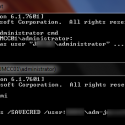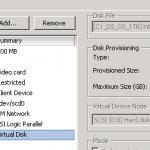Temporarily take site down for maintenance
Options +FollowSymlinks
RewriteEngine on
RewriteCond %{REMOTE_ADDR} !^111\.111\.222\.111
RewriteCond %{REQUEST_URI} !/index.html$
RewriteRule $ /index.html [R=302,L]
or
Options +FollowSymlinks
RewriteEngine on
RewriteCond %{REQUEST_URI} !^/oldsite/
RewriteCond %{REMOTE_HOST} !^123\.111\.123\.111
RewriteRule (.*) http://www.thedomain.com/oldsite/$1 [R=301,L]
Redirecting to a New Domain
Options +FollowSymLinks
RewriteEngine on
RewriteRule (.*) http://www.newdomain.com/$1 [R=301,L]
Force https use
RewriteEngine On
RewriteCond %{SERVER_PORT} !443
RewriteRule (.*) https://www.thedomain.com/ [R]
or
RewriteEngine On
RewriteCond %{SERVER_PORT} !^443$
RewriteRule ^.*$ https://%{SERVER_NAME}%{REQUEST_URI} [L,R]
Use a Custom Error Document
ErrorDocument 404 /mynotfound.html
Allowing access only from internal network
order deny,allow
allow from 123.123.
deny from all
Blocking Unwanted User-Agents
RewriteEngine on
RewriteCond %{HTTP_USER_AGENT} ^(.*)80legs [NC,OR]
RewriteRule ^(.*)$ http://80legs.com/ [L,R=301]
Password protecting a directory with htaccess and htpasswd
Enter the following into the .htaccess file:
AuthUserFile /path/to/.htpasswd
AuthName "Restricted Area"
AuthType Basic
Require valid-user
And then create the .htpasswd file with the following:
htpasswd -c .htpasswd theusername
There are also online tools for creating the paswords e.g.:
http://www.htaccesstools.com/htpasswd-generator/
Redirect old address to new domain
Options +FollowSymLinks
RewriteEngine on
RewriteBase /
RewriteCond %{HTTP_HOST} ^www.domain.co.uk [NC]
RewriteRule ^(.*)$ http://www.mysite.com/$1 [L,R=301]
Allowing Directory Browsing in single directories with .htaccess
Options +Indexes
DirectoryIndex nonexistantfile.html nonexistantfile.htm
The reason why I have specified the DirectoryIndex as nonexistantfile.html is to ensure that if someone (or script) accidentally copies an index.html file into the directory that it won’t be used and instead the contents of the directory will be listed/browsable. Some Content Management Systems will copy new index.html files into directories even if you don’t want them 😉.htaccess URL Rewriting
The following tool is useful for generating Rewrite Rules for SEO friendly URL’s in an Apache .htaccess file.
http://www.linkvendor.com/seo-tools/url-rewrite.html
.htaccess Referers
I recently needed an intranet website to be protected so that only authorised users could get access to it. Since there is already a part of the website which requires a login and authentication to a directory I had a link placed on this page. The .htaccess file needed to accept referers only from the domain of the authenticated site. Since this new site was a single html page with hundreds of links to PDF files I also needed to add a referer for the HTML page that contained the links. Clear as mud? Yes. OK an example. The following code will not allow connections directly to www.theseconddomain.com .
www.theseconddomain.com can only be accessed by clicking a link on www.thefirstdomain.co.uk that points to www.theseconddomain.com
SetEnvIfNoCase Referer www\.thefirstdomain\.co\.uk good_referer=1
SetEnvIfNoCase Referer www\.theseconddomain\.com/index.html good_referer=1
order allow,deny
allow from env=good_referer
ErrorDocument 403 http://www.thefirstdomain.co.uk/error.htm
Apache Authentication with Active Directory (LDAP)
Good article about this here.
A .htaccess file can be used to protect a directory on an Apache2 server. The code to use is:
AuthType Basic
AuthBasicProvider ldap
AuthUserFile /dev/null
AuthName "Test LDAP"
AuthLDAPURL "ldap://xxxx.ads.tla.co.uk:389/OU=Staff,OU=ORG,dc=ads,dc=tla,dc=co,dc=uk?sAMAccountName?sub?(objectClass=*)"
AuthLDAPBindDN CN=FullDNtoADuser,DC=tld,DC=co,DC=uk
AuthLDAPBindPassword myADpassword
AuthLDAPGroupAttributeIsDN on
require valid-user
The values need to be changed to reflect the Active Directory structure. The most important line appears to be AuthLDAURL which is the LDAP search.
To use Exchange it may be possible to use:
AuthLDAPURL "ldap://ldap.yourdomain.com:389/cn=Recipients,ou=ServerName,o=DomainName?uid?sub?(objectClass=*)"

